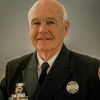Have you ever played the ‘what if’ game? It’s not very hard to do, but there is at least one rule that I strongly suggest out of experience: never play if you are on a date, especially a date night with your spouse.
The game involves you looking at a structure, perhaps a new fast-food restaurant under construction, a business you’re visiting for the first time, or a subdivision where friends may reside and you stop and say. The game requires you to consciously stop, look around starting with the exterior and begin to formulate a pre-incident plan in your mind.
Some of the things you’ll want to include are looking for available building access and egress, fire lanes, water supply, type of construction, built-in fire protection such as sprinklers, automatic suppression systems in kitchens, computer rooms or vaults, and fire alarms.
Other factors might be the fire load, occupancy, life hazard, aisle space, security systems, locks, storage, offices, lighting and HVAC.
Want fries with that?
Let’s use the fast-food restaurant as an example. Normally there is a fairly adequate parking area and predetermined number of entrances that also serve as exits.
What about the construction? If it’s typical and relatively recent, you can bet that it is mostly wood-frame truss construction that is meant to support the roof and the very substantial HVAC.
What about the kitchen? How many cooking units, especially deep fryers does it have? Are they equipped with a suppression system covering all the fryers, grill surfaces and exhaust hoods?
Is the system both automatic using a fusible link and manual? Is it connected to the automatic fire alarm? What would be the more typical fires?
If you said, a grease fire, you’d most probably be correct, but where? Would it most likely be a surface grill, fryer, hood or grease trap? What is your access to each appliance?
Slip and fall
What special hazards have you observed? If you said watch out for the HVAC on the roof, you would be correct. But if you also mentioned the thin layer of grease on the floor, you get a gold star.
If you’ve ever walked onto the floor of a fast-food restaurant in fire boots, then you know how slippery it becomes. Losing your footing, falling down, or spraining an ankle can happen under the best of circumstances.
But think about how this would be if you were inside and realized that you were experiencing pre-flashover conditions — it might make you think about the option of knocking the fire down substantially from the exterior before making entry.
By the way, did anyone mention the playground inside? The plastic gym set not only adds to the fire load, but could also become a deadly maze for a firefighter in zero visibility.
Soft drink dangers
What type of ceiling do you see? If it’s a drop ceiling, how is it hung and supported? Could a fire spread undetected above? Where would be a safe area to lift a tile or punch an inspection hole?
Where would you suspect the utility shut-off to be for natural or LP gas and the electricity? Can you spot any transformers or underground electrical utilities?
During a 360-degree walk around, look for a large intake valve on a remote side near the kitchen. If the restaurant is relatively new, it probably uses liquid carbon dioxide rather than compressed cylinders of CO2 to add the carbonation to its soft drink dispenser. It wasn’t that long ago that the Phoenix Fire Department brought this to the attention of the fire service literally by accident.
That department made an EMS call for a person passed out at a recently finished location of a very popular fast-food restaurant chain. What started as a routine medical call wound up a critical incident involving an oxygen-deprived IDLH atmosphere where the rescuers almost became additional victims.
What the crew discovered was a major carbon dioxide leak at the fill valve for the newly installed liquid CO2 system. Since carbon dioxide displaces oxygen, not only the civilians reported to have passed out but also part of the responding medic crew fell victim to oxygen deprivation.
The engine company officer suspected something very wrong was happening and quickly had all hands retreat to safety, evacuate the premises and don full PPE to re-enter and investigate.
Now given the answers to all these questions, how would you attack a well involved kitchen fire reported just past midnight? Would your strategy change if the fire were reported at noon on a Saturday?
So how do like the ‘What If’ game so far? Remember that fast-food restaurants are probably the commercial occupancy we visit most frequently. Are you ready to take on the big-box hardware and lumber store? What about your friend’s house in the new subdivision?
Each structure has its own hazards and requires us to think ahead of the fire by generally knowing what to expect even prior to our arrival, size-up, initial 360-degree walk around, or first attack line. That is the true value of the ‘What If’ game.
A tip of the helmet
While recently driving across U.S. 30, I yielded to Ligonier (Pa.) Fire Department’s heavy rescue truck approaching a motor vehicle accident scene. The driver and officer placed the vehicle across the affected lanes of the divided highway.
They then set up a safety zone with flares and traffic cones so the engine crew, chief officer, police and their crew could safely move about to attend to the driver and her severely damaged vehicle. Remember, always think safety on motor vehicle accident scenes and protect yourself and others by using your apparatus placement to help create a safe area to work.



